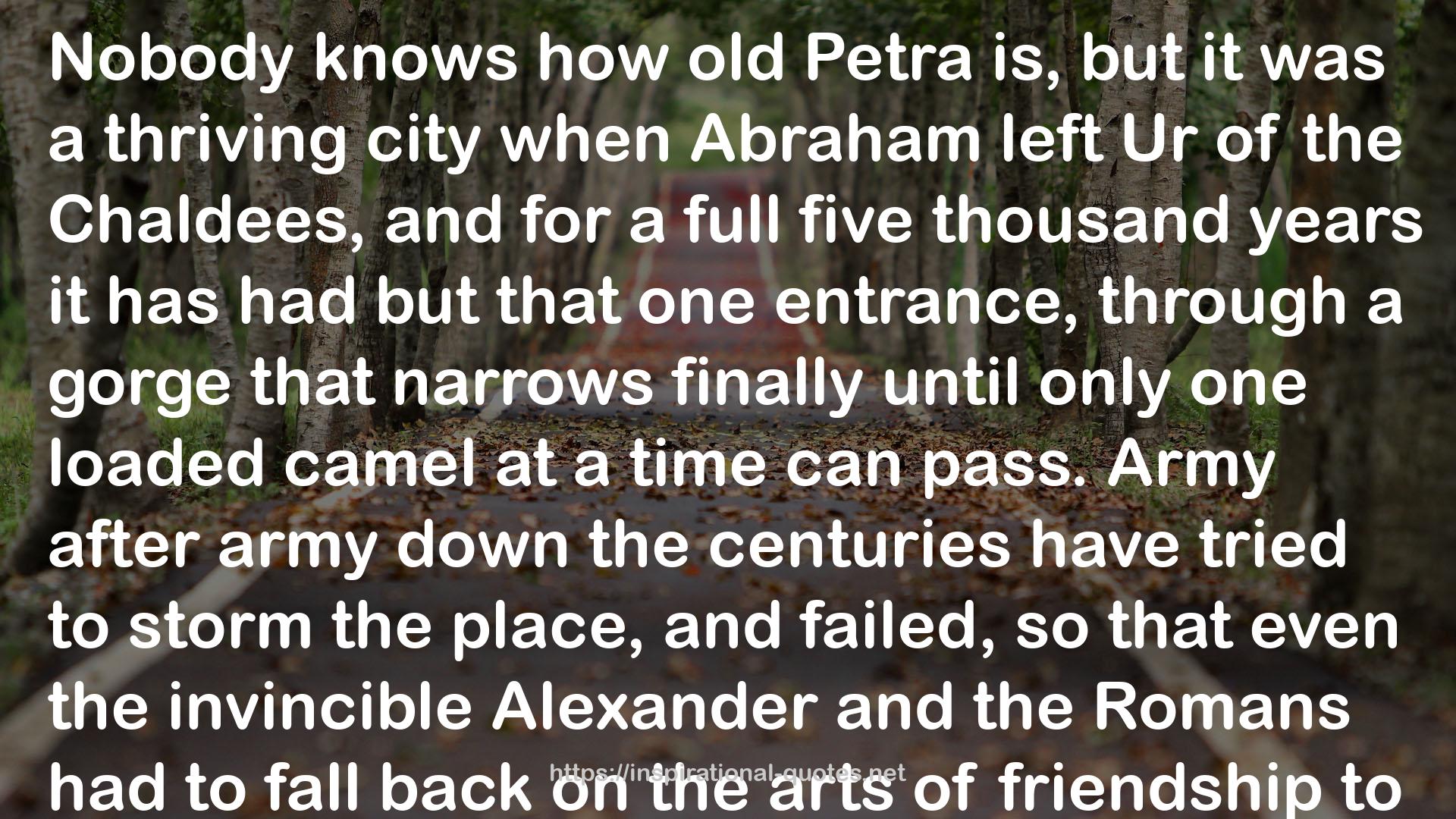" Nobody knows how old Petra is, but it was a thriving city when Abraham left Ur of the Chaldees, and for a full five thousand years it has had but that one entrance, through a gorge that narrows finally until only one loaded camel at a time can pass. Army after army down the centuries have tried to storm the place, and failed, so that even the invincible Alexander and the Romans had to fall back on the arts of friendship to obtain the key. We, the last invaders, came as friends, if only Grim could persuade the tyrant to believe it.
The sun rose over the city just as we reached the narrowest part of the gut, Grim leading, and its first rays showed that we were using the bed of a watercourse for a road. Exactly in front of us, glimpsed through a twelve-foot gap between cliffs six hundred feet high, was a sight worth going twice that distance, running twice that risk, to see—a rose-red temple front, carved out of the solid valley wall and glistening in the opalescent hues of morning.
Not even Burkhardt, who was the first civilized man to see the place in a thousand years, described that temple properly; because you can’t. It is huge—majestic—silent—empty—aglow with all the prism colors in the morning sun. And it seems to think. "
― Talbot Mundy , The Lion of Petra
